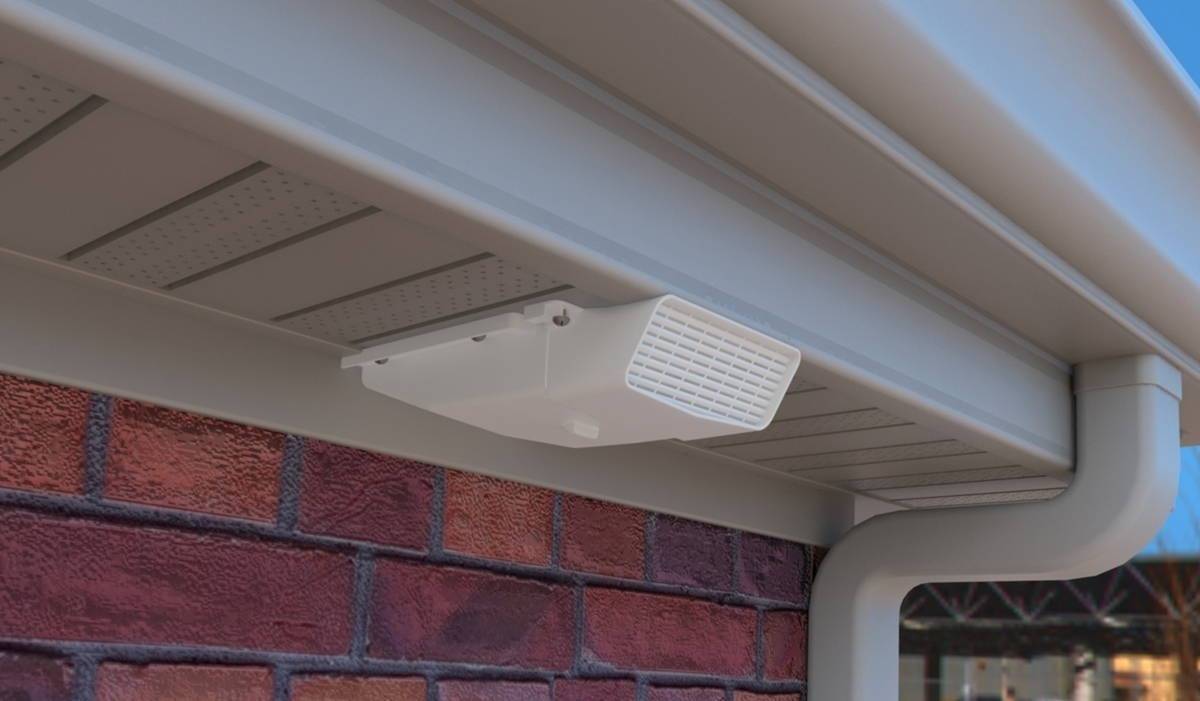Soffit Vents 101: Top 3 Must-Know Tips

Although rarely discussed, soffit vents are a critical part of proper roof ventilation. Read on to learn the top 3 things you should know about them.
Tip #1: What do soffits and soffit vents do?
Soffits are important. They work together with a top-of-roof ventilation source—such as a ridge vent, gable vents, or an attic fan—to ensure that the roof deck is properly ventilated. Roof ventilation is critical for the health of any roof. Soffit vents are used to vent bathroom exhaust fans to the soffit. They are one of three methods of venting.
When venting a bathroom fan, a soffit vent is traditionally the least ideal venting option, as the bathroom’s exhaust air circulates into the attic via the soffit’s passive air stream. As a result, builders most commonly vent bath fans to the roof or a side wall. However, if the right vent is used and installed properly, a soffit vent will exhaust the air away from the home and can be the best option.
See our illustration below for how a soffit vent should be installed to properly direct vented air away from the home and prevent it from re-entering.

Tip #2: Improper installation and/or poor soffit vent design can cause issues
Using the right soffit vent and installing it correctly helps avoid issues. Here are the issues that can be caused by incorrectly venting moist bathroom air into the soffit vs. having it pass through the soffit and away from the attic:
- Attic condensation that affects insulation due to diminished R-Factor; thus, higher heating and air conditioning costs
- Increased moisture in the attic which can cause mold and rafter degradation
- Early deterioration of roof shingles
- Indoor air quality issues that can impact health
For all these reasons, it is critical to install a soffit vent that pushes the air out of the passive airflow beyond the gutter line.
Tip #3: Why is it code to put in a soffit vent?
A specific ventilation requirement for bathrooms began in the 1946 Uniform Building Code. This code was created to prevent mold and other structural issues that occur in a high moisture environment in the home.
Attic ventilation is the key to a durable and energy-efficient home. In the winter, allowing a natural flow of outdoor air to ventilate the attic helps the attic properly ventilate moisture caused by cooking, showering, and general heating. In the summer, natural airflow in a well-vented attic moves hot air out of the attic, protecting roof shingles and removing moisture. The attic insulation will resist heat transfer into the house during the summer and prevent warm air from leaking into the attic during the winter.
It is critical when doing a bathroom remodel or during new construction, to vent a bathroom fan in a manner that does not send moisture into the attic. Otherwise, you risk negatively impacting insulation effectiveness, creating black mold, and structural damage.
Protect your home and family with the patented PreVent-It soffit vent
Our 4-inch under-eave soffit vent dispels the misconception that soffit vents should discharge air under the soffit. Its patented design makes it the only soffit vent that effectively directs moist bathroom air away from the soffit, preventing it from re-entering the home. Don't put your family's wellness or the health of your home at risk by using a less effective, cheap soffit vent.